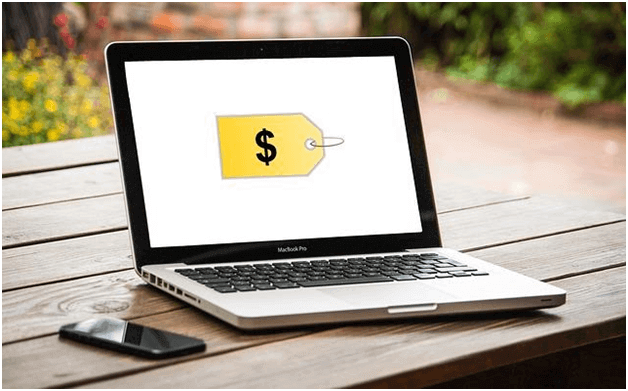5 Important Ways the IoT is Reinventing Modern Businesses in 2020

It has been quite a decade in terms of technological development. 5G technology is all set to launch across the United States and other parts of the world such as China. Smartphone manufacturers like Motorola have already announced 5G-supported models. Artificial intelligence and machine learning received a lot of attention this year, with many huge corporations like Amazon and Alibaba increasing their efforts to acquire more data, analyze it, predict trends, and optimize profits. There has been a massive upsurge of interest in space travel again, with companies like SpaceX unveiling revolutionary forms of space travel.
However, one area that has perhaps not received its fair share of hype and media publicity is the Internet of Things.
Of course, everyone has heard of IoT and smart devices. But most of these conversations happen in the context of smart homes. When people think of IoT devices, they imagine smart lights and thermostats they can control with their smartphones. Of course, smart homes are one very important application for IoT, but that isn’t all it is limited to. For example, did you know that IoT is playing a crucial role in improving modern Fintech services? While it may not be as widespread as many of us IoT advocates would like, many businesses are waking up to the vast potential that IoT devices hold in improving their bottom line.
IoT in 2020 at a Glance
In 2017, global spending on IoT amounted to approximately $235 billion. According to this report by Bain and Company, the combined global IoT market will hit $520 billion by 2021. This is more than a 100% increase in less than 5 years. Modern businesses who position themselves to take advantage of this will find themselves ahead of the game in many ways.
Consider this. Almost every aspect of our modern lives generates data. From wearable tech that monitors our exercise habits and vital signs to web browsers that allow us access to the internet, we are constantly generating data. Some of this data is for our benefit, while most of it benefits the manufacturer of whatever device we happen to use. Overall, the IoT connected world is one that harnesses data from a vast network of different devices to improve things, whether it is a smart city or a smart business.
In the business world, IoT devices do pretty much what they were made to do. That is, of course, to record and transmit data. In businesses, IoT devices can monitor specific processes and functions, collecting data to give new insights as well as improving business efficiency. All of this allows business managers and executives to make more informed, prudent, and data-driven decisions.
Read More: best wireless headphones under 150
More and more businesses are running trials with IoT industrial devices than ever before. It would be too obvious to say that IoT devices have multiple use cases in modern businesses. But if you want to jump on board the IoT wagon, or convince decision-makers within your organization to do the same, you need to understand exactly how IoT devices are reinventing businesses in the Digital Age. Here are 5 ways IoT transforms the way we do business:
- Offering Better Insights and Improving Customer Experience
- Reducing Operational Expenditure and Downtime
- Increasing Business Productivity and Efficiency
- Reducing Wastages and Improving Asset Tracking
- Brand New Ways of Doing Business
Let’s take a closer look at these areas below.
Offering Better Insights and Improving Customer Experience
More networked touchpoints across your business functions mean more potential data gathered and more analytical output. Traditional businesses gather feedback from customers using Spectrum phone services. Successful modern businesses gather data from every avenue. The more data streams you have, the more you have to work with when it comes to analysis and extracting business insights about both business processes as well as consumers. Of course, many cloud platforms from Google, IBM, Microsoft, and other tech corporations exist that can do this for you. But there are several advantages to using an IoT network instead.
Many industries are shifting from their reliance on third-party data centers located in remote countries. The biggest drawback to using cloud-based business insights software is the latency. In response, businesses are pivoting towards edge computing using IoT devices in various business processes. These devices gather data and offer insights that business executives can use to improve both processes as well as the experience they offer to customers.
Reducing Operational Expenditure and Downtime
So we know that IoT networks are a crucial thing to have when it comes to gathering insights. But as a by-product of incorporating IoT devices in various business processes, you can actually reduce operational costs and downtime. Don’t believe us? Here’s an example. IoT and advanced 3D rendering have given birth to a technology known as digital twins. A digital twin is essentially a digital model of a tangible physical asset based on real-time data and can be either in pure data form or as a 3D representation.
What’s so impressive about digital twins? They promise us a world where we can predict maintenance needs and have proactive operations. Of course, you will need to include other technologies like smart supply chains and big data to reap the most benefit. But the fact remains that IoT devices, when paired with other modern technologies, can help you drastically cut down on operational and maintenance costs, as well as predicting breakdowns and taking proactive action.
Increasing Business Productivity and Efficiency
This is perhaps the most touted advantage of incorporating IoT systems into a modern business. IoT networks connect different business processes together. This inherently makes them one of the best ways to identify and improve weaknesses in operational efficiency and productivity. Ford uses special bodysuits that track worker movement, similar to motion tracking technology used in sports or entertainment. This not only allows them to make their assembly line safer for workers but also makes it more efficient at the same time. IoT can help businesses identify and remove bottlenecks in different processes, such as manufacturing, allowing for more streamlined business functions.
Reducing Wastages and Improving Asset Tracking
IoT devices help track operational efficiency, which ties in closely with reducing wastage. Wastage accounts for millions of dollars in lost revenue every year, something that IoT networks can help you reduce. IoT devices can be used to track assets at any point in the supply chain. For example, a company with a complicated supply chain consisting of thousands of SKUs can often face wastage in the form of lost SKUs. IoT devices can track these SKUs at any given time, minimize them being lost, and relocating the ones that do get lost. In optimizing the supply chain for efficiencies, IoT also helps reduce revenue lost to wastages by tracking assets in the supply chain effectively.
Brand New Ways of Doing Business
When people imagine IoT use cases in business, the most obvious ones are process, productivity, and efficiency improvements. But increasingly more companies are recognizing how IoT can help them get more data on their consumers and how they use products. Smart vehicles, trains, coffee-makers, and many other aspects of our lives use IoT devices now.
Originally, these were “dumb” things with no design intention to connect to other things. But this is where IoT adds value, enabling these smart things to transmit data back to their manufacturers. These manufacturers or operators then use the data to improve the services they offer. Companies are now looking into integrating IoT into their products and services, using the generated data to benefit not just their consumers, but also their own internal processes.
One of the biggest manifestations of this is a collective shift away from conventional means of business. Or at least, adding new revenue streams from more modern business models. The data you collect on your consumers is in itself very valuable. But what is more significant is businesses realizing the importance of subscription-based services for the company’s connected products. Repeat subscriptions offset any costs you might incur in initially entering the market.
Another aspect to consider is the overall optimization of production costs. IoT products provide operators and manufacturers with valuable data and can help them streamline their operations. This means a reduced cost of production, which ultimately translates into a cheaper product. A cheaper product than your competition, in turn, opens up more markets.




